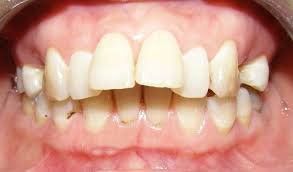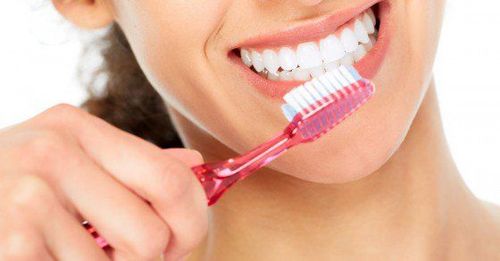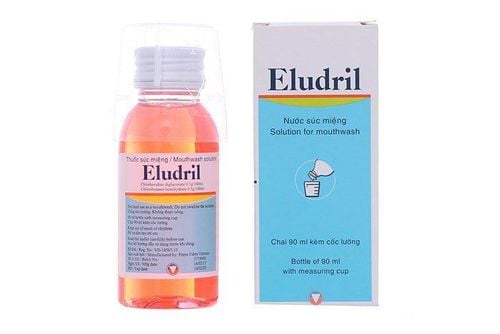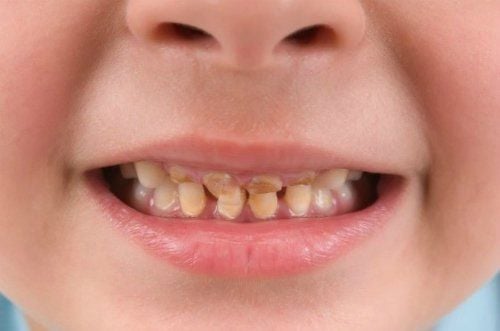This is an automatically translated article.
Tooth decay is a disease that can be seen in both children and adults. This not only makes chewing and swallowing food difficult, but also affects the aesthetic factor. Even tooth decay can cause dangerous complications for patients. So, should you extract the decayed molars?1. The role of molars
A molar tooth consists of two parts: the crown (visible to the naked eye) and the root in the jawbone (not visible). An adult has a total of 32 teeth, including 4 different types. Of these, 16-20 are molars, symmetrically arranged between the upper and lower jaws.
Small molars: at the 4th and 5th positions from the incisors Large molars: located in the innermost, next to the small molars, at the 6th and 7th positions Wisdom teeth: or 8th teeth, usually at the beginning grows in adulthood (17 - 25 years old) Molars play a decisive role in chewing and grinding food. This is also the reason why molars are prone to decay if not cleaned properly. In addition, because it is located in a hidden corner, molar tooth decay is often difficult to detect early without visiting a doctor.
In the early stages, enamel will gradually disappear or appear brown streaks on the surface. However, at this time, the patient will not feel any discomfort or pain. It was only when tooth decay spread, causing obvious symptoms such as sensitivity, pain, infection, etc., that the situation was quite serious.
2. What to do with molar tooth decay?
Cavities in molars greatly affect the patient's aesthetics, health and daily life. The condition of molar tooth decay not only occurs in children but also causes many adults headaches. Tooth decay causes food to get stuck in the mouth, making the patient uncomfortable. The enamel layer also gradually loses, the chewing force in the teeth is reduced, making it difficult to eat tough and hard foods. In addition, decayed molars that are not treated in time will spread to other tooth areas in a short time.
Therefore, the best solution when detecting signs of decay in molars is to visit a Dentist - Jaw - Face to accurately determine the disease status and receive reasonable advice for each case. fit.
3. When to extract deep molars?
“Should the molar tooth be extracted?” This is a question asked by many patients. However, each case has its own characteristics and treatment. In addition, caries is divided into several distinct stages. To answer this question, a thorough examination and diagnosis is required.
3.1. Preservation of decayed molars Currently, instead of extracting decayed molars, many doctors put the motto of preserving teeth on top. Molar caries are preserved when at a mild level, only insignificantly affecting the root part.
If the decayed molars only stop at the enamel, the doctor will clean, fill, and seal the teeth to treat them thoroughly. If the molar tooth is deeply decayed into the pulp but has not caused damage to the root, the dentin remains intact, the doctors treat the pulp and fill the root. Besides, porcelain veneers are also a treatment method that many patients care about when preserving teeth. However, decayed molars can recur at any time, and teeth also become more sensitive in a short time. Therefore, after being successfully treated, the problem of maintaining hygiene and taking care of teeth needs to be done carefully and meticulously every day. Pay special attention when chewing food, do not eat too hard. Instead, choose foods that are soft, easy to chew, and good for digestion.
3.2. Extraction of decayed molars If it is not possible to preserve the teeth, the specialist doctors will proceed to extract the decayed teeth. This method is only performed when the deep inflammation is too severe and cannot be recovered. For the following cases: root amputation, receding gums, periodontitis, misaligned wisdom teeth ... there is a risk of affecting neighboring teeth, all decayed molars will be completely removed. whole.
Most patients are afraid of pain, often do not want to extract the decayed molars. However, trying to keep the teeth makes it easier to accumulate plaque and food, causing bad breath and hindering dental hygiene. More dangerous, can lead to alveolar bone abscess, an infection that manifests as swelling, redness, accompanied by fever and pain. The most dangerous complication is sepsis , which can lead to death if not treated promptly.
4. Is tooth extraction painful?
With today's advanced techniques, tooth extraction with decay does not hurt or affect nerves as many people imagine. Before the extraction, the doctor will do a general examination first and, if necessary, take X-rays or perform some tests.
Besides, thanks to the effect of anesthetic, the patient will not feel pain or discomfort when the doctor conducts the treatment of molar tooth decay. After being extracted, scraping the pathological tissues around the apex, the patient will hold a cotton ball tightly for 30 minutes to 1 hour to stop the bleeding. Next, the patient just needs to go home to take the prescribed medicine and take care of the teeth as directed by the doctor.
However, after tooth extraction, the patient will have to face consequences such as: reduced chewing force, misaligned bite, complications of bone loss in the molar region... For these reasons, doctors Often advise patients to restore molars after extraction. In which, making porcelain teeth or implanting implants are the most chosen methods.
When you have the basic knowledge about deep molar extraction, you should go directly to specialized Dentistry - Jaw - Facial facilities to be examined by a doctor and have appropriate indications.
Please dial HOTLINE for more information or register for an appointment HERE. Download MyVinmec app to make appointments faster and to manage your bookings easily.













